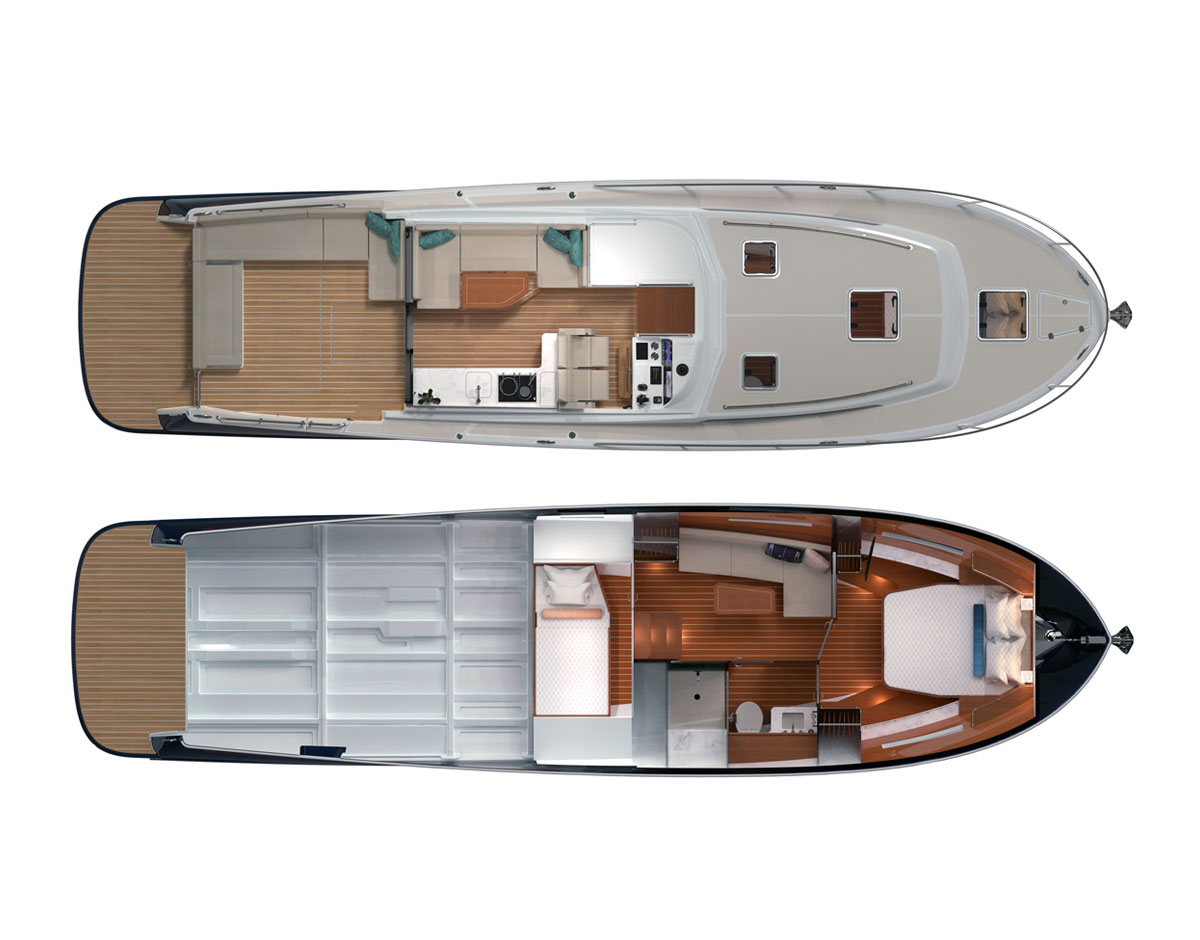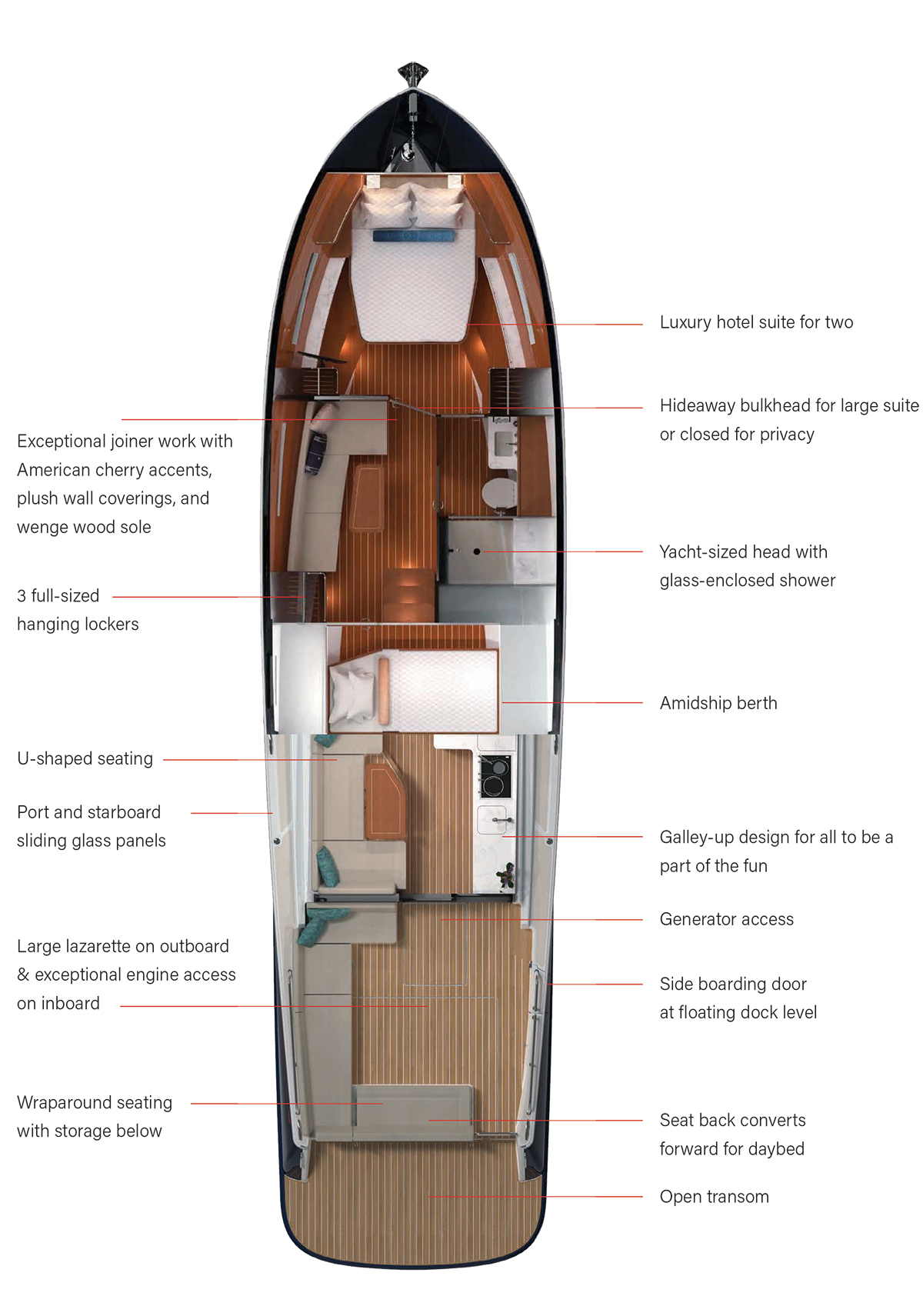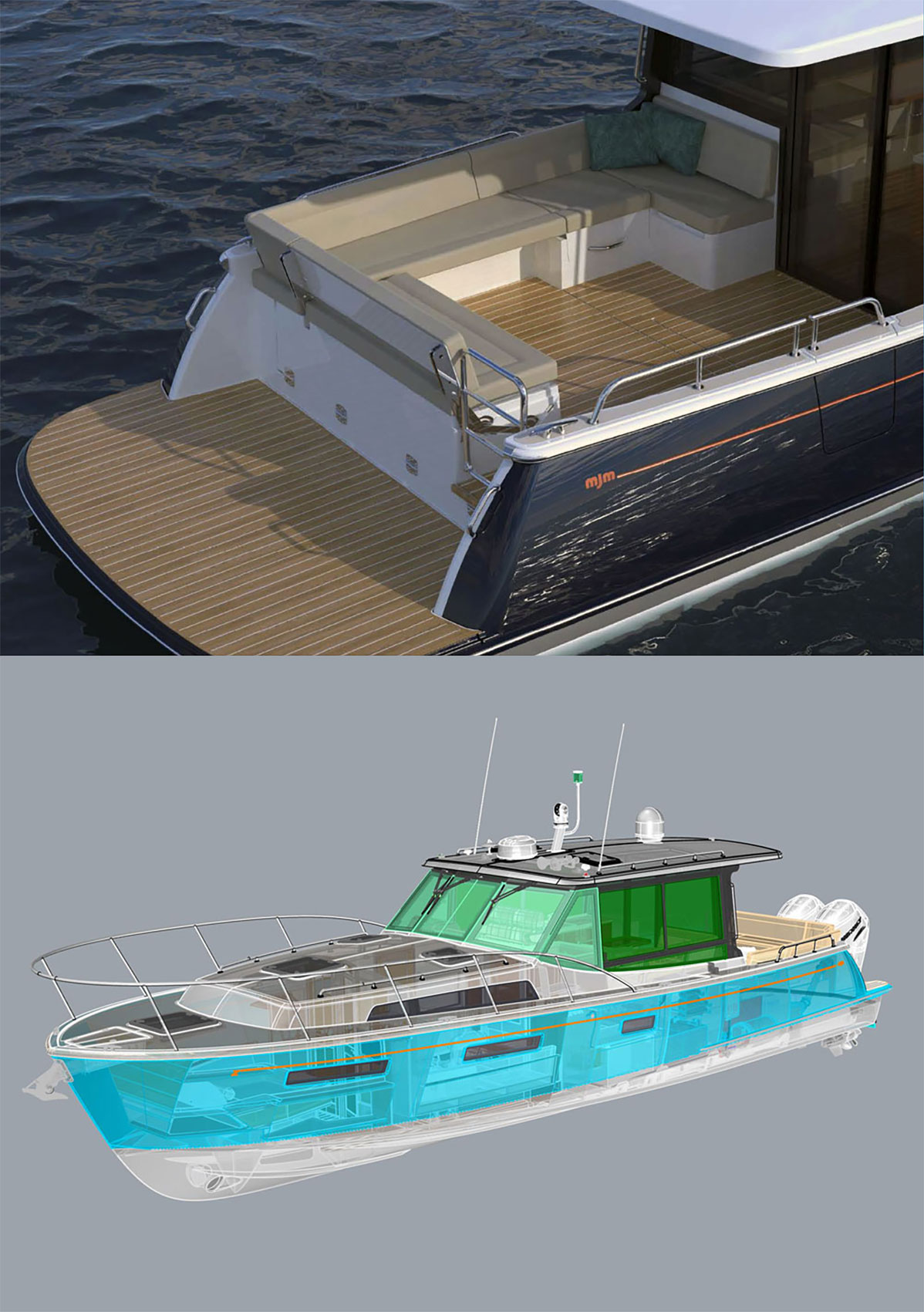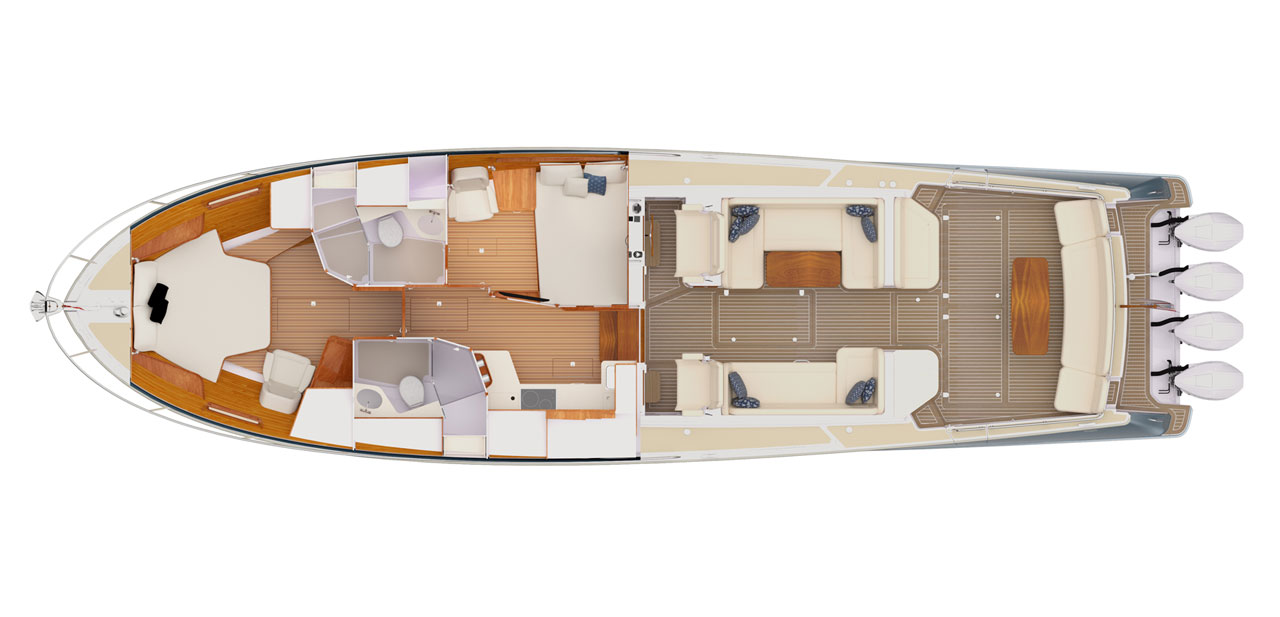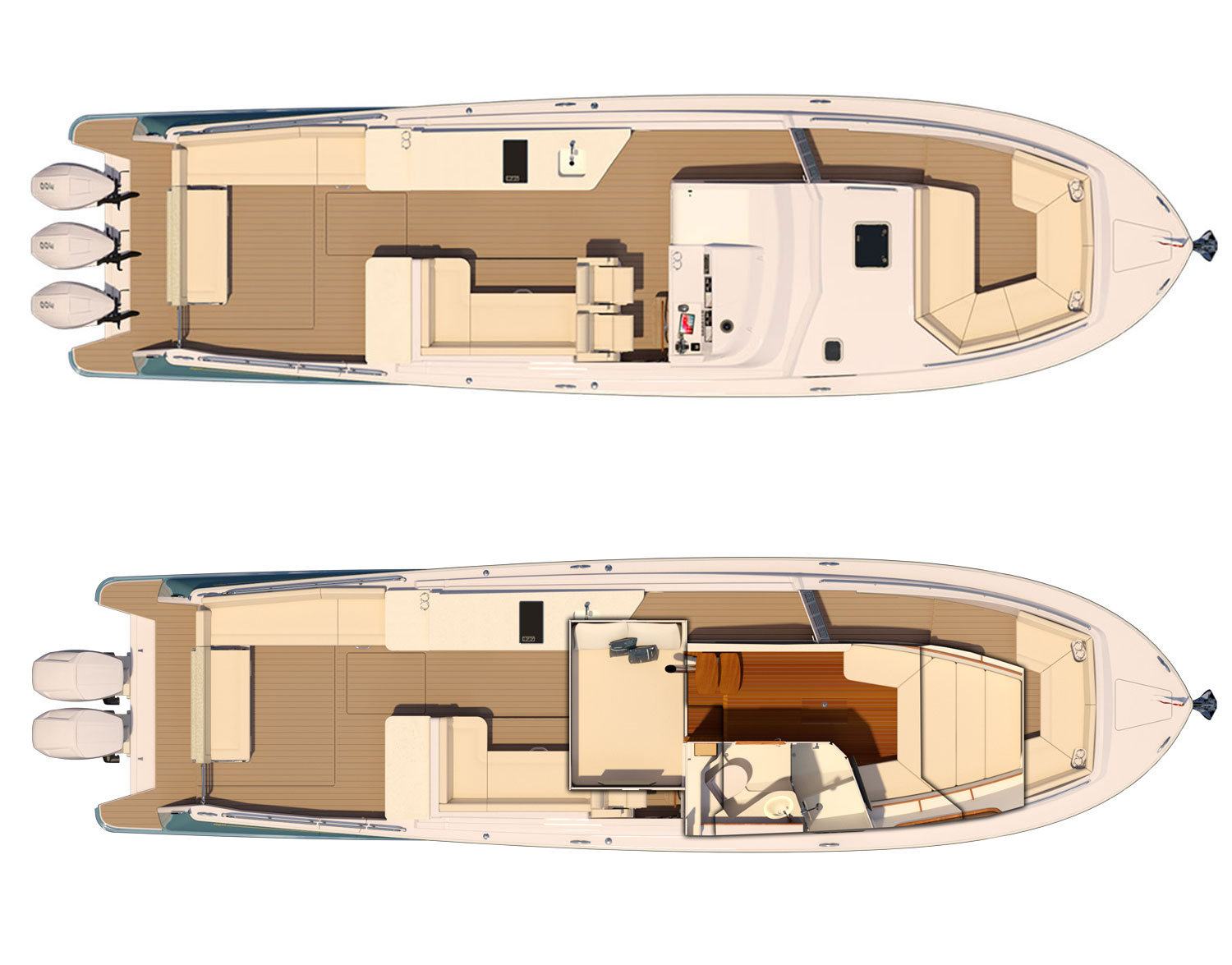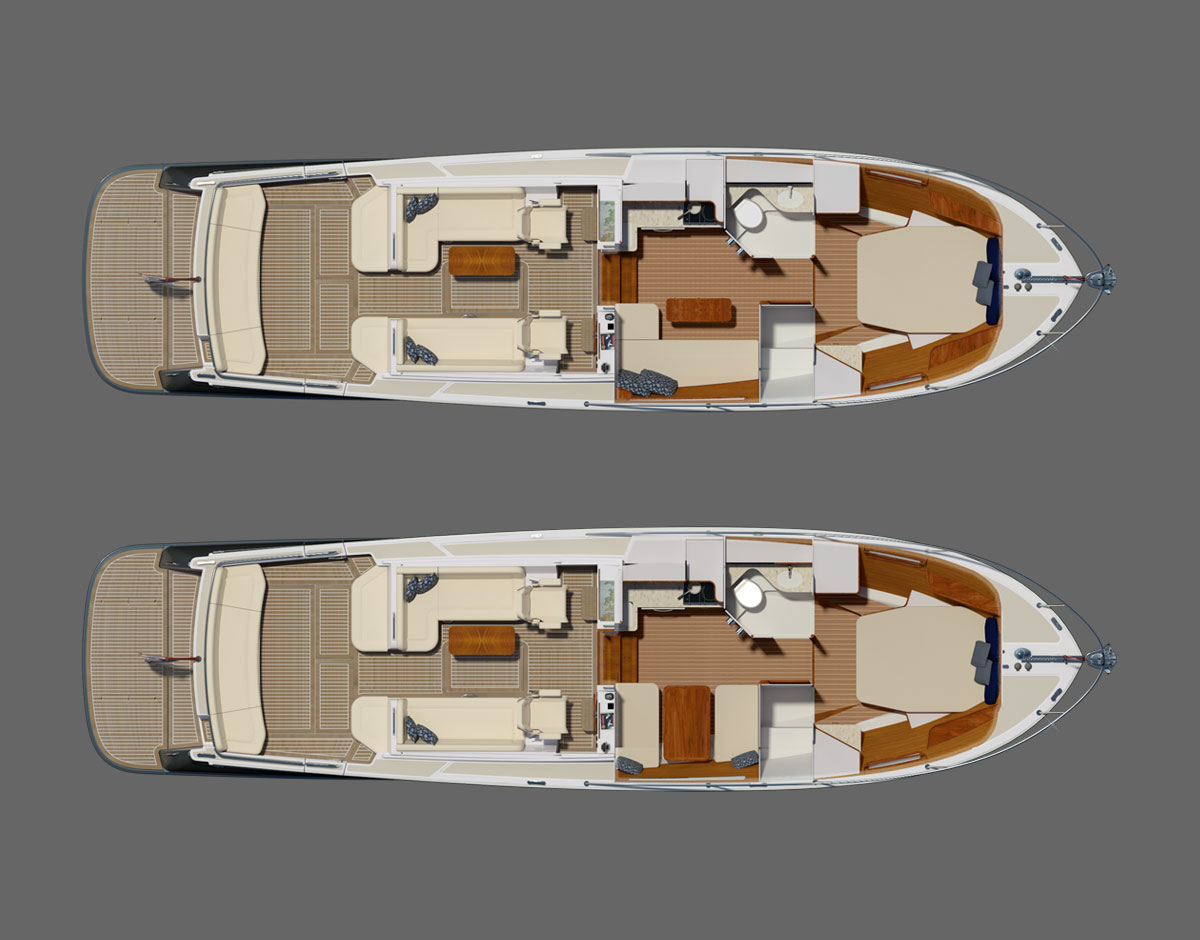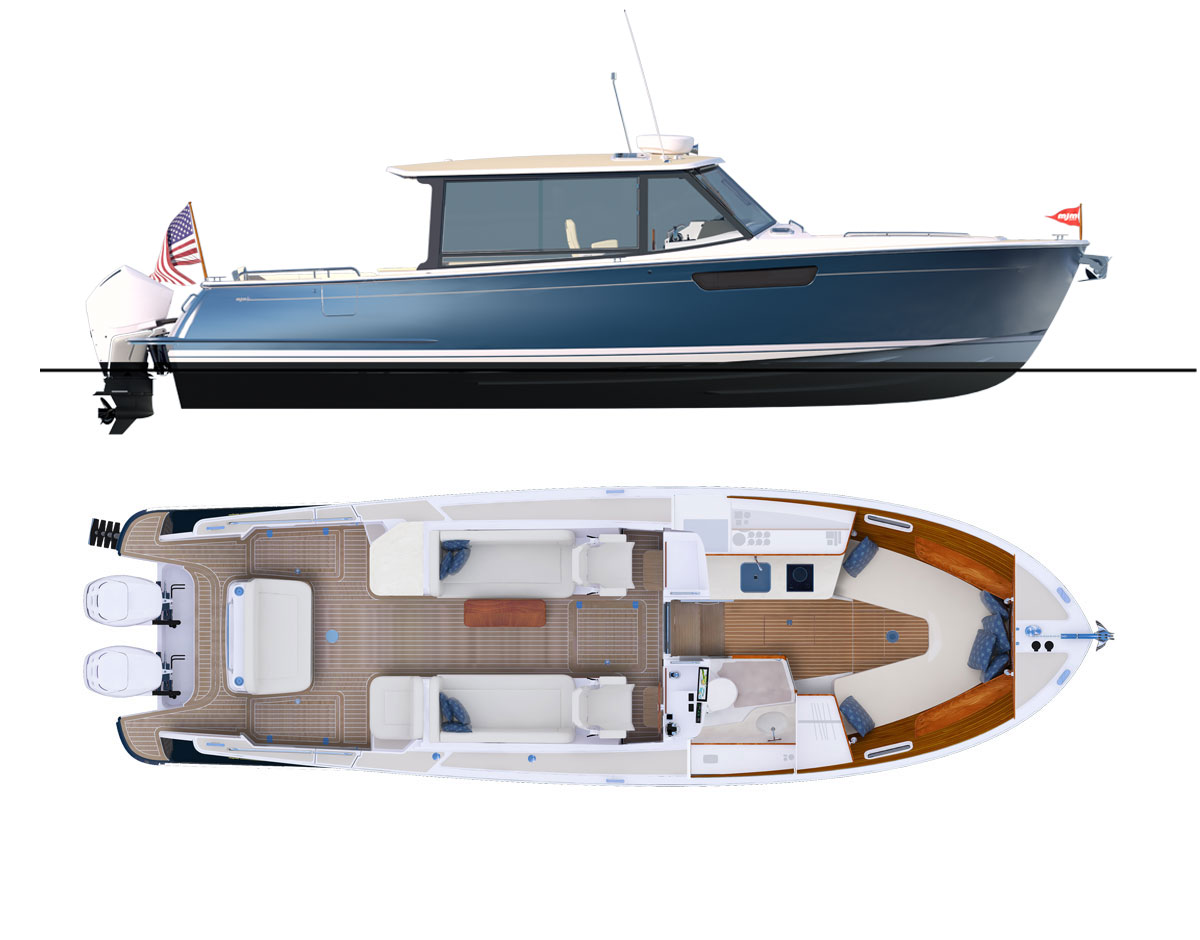MJM Makes Performance a Priority
By Herb McCormick
There are many ways for recreational mariners to explore the almost endless joys of a cruise through Maine’s iconic waters. A converted lobster boat, a salty catboat, a robust long-range trawler, a jet-drive picnic boat, a powerful all-oceans sloop: Depending on your tastes and aspirations, each of these vessels can get the job done well. Another option—and frankly, in a blend of two distinct styles I’d never previously heard of or considered—is the Carolina Downeast approach. But then I stepped aboard a yacht that proudly describes its roots as such: the new MJM 42 Express Cruiser. Mainers require no primer as to what features constitute a good downeast boat: traditional lines, an inside-steering station, and a good, protected cockpit for lounging and entertaining. Designed to operate along the rugged Maine coast and the Canadian Maritimes, safety and seaworthiness are baked into the DNA. The Car olina style emphasizes a deep, V-shaped hull and a somewhat flared bow to promote a sweet, dry ride. Now have a look at the profile of the MJM 42: check, check, and check.
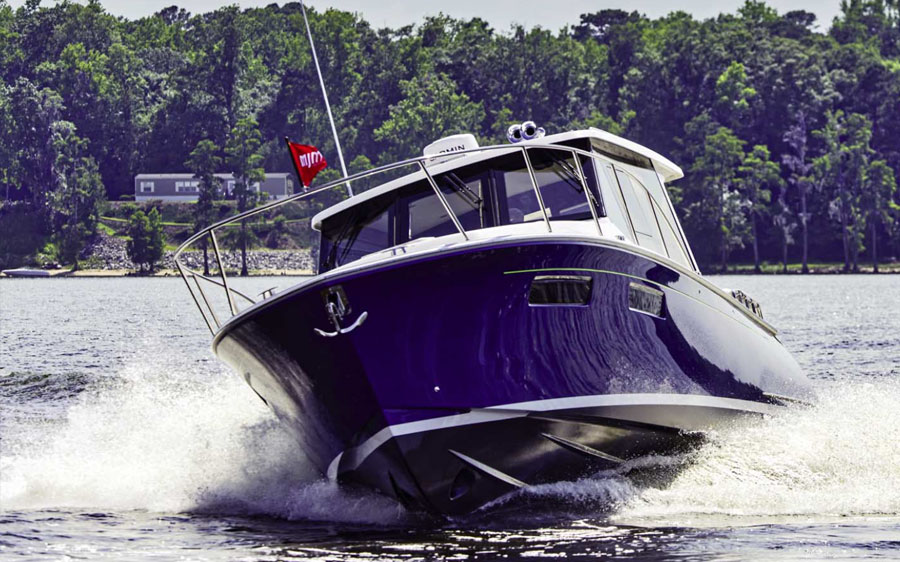
The MJM 42 Express Cruiser is described by the builder as being a Carolina Downeast Performance Yacht. In other words, it offers a spirited ride.
While the MJM brand is now produced in a gleaming facility in Washington, North Carolina—hence the Carolina connection—the company has a strong New England pedigree, since that’s where they were first built. Founded by Bob Johnstone of the famous sailing clan that launched the J/Boat line of per- formance sailboats, MJMs were originally conceived as a so-called “sailor’s powerboat” for those wishing to transition from sail to power. Now under new management, it’s important to remember that “performance” was always a major priority, and remains so today.
As when whipping up a gourmet meal, it’s hard to go wrong when you use the best ingredients. The same can be said for building boats. MJM likens its construction methods, which they’ve dubbed the “C5 Build Process,” to producing aerospace-quality structures. The composite laminate employs E-glass and a structural foam core that’s vacuum-infused with epoxy resin, and post cured, a major step up from the polyester and vinylester used in most contemporary production boats. The end result is a strong but light vessel; the 42-footer displaces less than 20,000 pounds, which is notable.
Following last fall’s Newport International Boat Show, I had the opportunity to test drive the boat on Rhode Island’s Narragansett Bay. Stepping aboard, the layout is extremely inviting and expressly aimed at a couple. The indoor/outdoor living areas between the cozy cockpit and inside helm station, with the adjacent galley, is well-conceived; the floorplan can be left wide open or closed tight to separate the two spaces depending on conditions. A series of large cabin windows in the coach roof provide loads of natural light and 360 degree visibility. Forward, there’s a stateroom with a generous double berth and adjoining head compartment, with all the interior joinery and furniture rendered in lovely cherry. It’s a handsome, even luxurious setup.
Our test boat was equipped with twin Volvo D6-440 diesel engines with DPI stern drives (a pair of 600-horsepower Mercury Verado outboards is also available). All the relevant numbers (speed, rpm, fuel consumption) are integrated into the Garmin MFD displays at the helm. There’s a Side-Power bow thruster and you can toggle the helm between the wheel or a joystick. With the latter, the vibe is not unlike that when operating a jet-drive craft. The throttle and shifts are electronically controlled, which makes for a very seamless experience. The 42 is a lot of fun to drive.
Opened up, at 3,750 rpm, we notched an impressive 39 knots, and the boat still cornered like a skiff. The MC2 Quick gyro stabilizers did a fine job of flattening out the ride. Settling into cruising mode, we registered 30 knots at 3,150 rpm, which the Garmin informed us was a 75-percent load burning 30 gallons of fuel per hour. Those are solid, even economical numbers. Easing back on the throttle, the GPS enabled “dynamic positioning” button on the joystick allowed us to park the boat in place in what was a pretty bumpy seaway. And between the joystick, stern drives, and thrusters, crabbing alongside the dock in a tight space when our sea trial had concluded was ridiculously easy.
Now, with a taste of the pleasures of Carolina Downeast cruising behind me, it’s pretty clear that the hybrid blend of southeast and northeast styles is a winner. Some might even say it’s the best of both worlds.
 MJM Makes Performance a Priority - By Herb McCormick There are many ways for recreational mariners to explore the almost endless joys of a cruise through Maine’s iconic waters. A converted… Read More
MJM Makes Performance a Priority - By Herb McCormick There are many ways for recreational mariners to explore the almost endless joys of a cruise through Maine’s iconic waters. A converted… Read More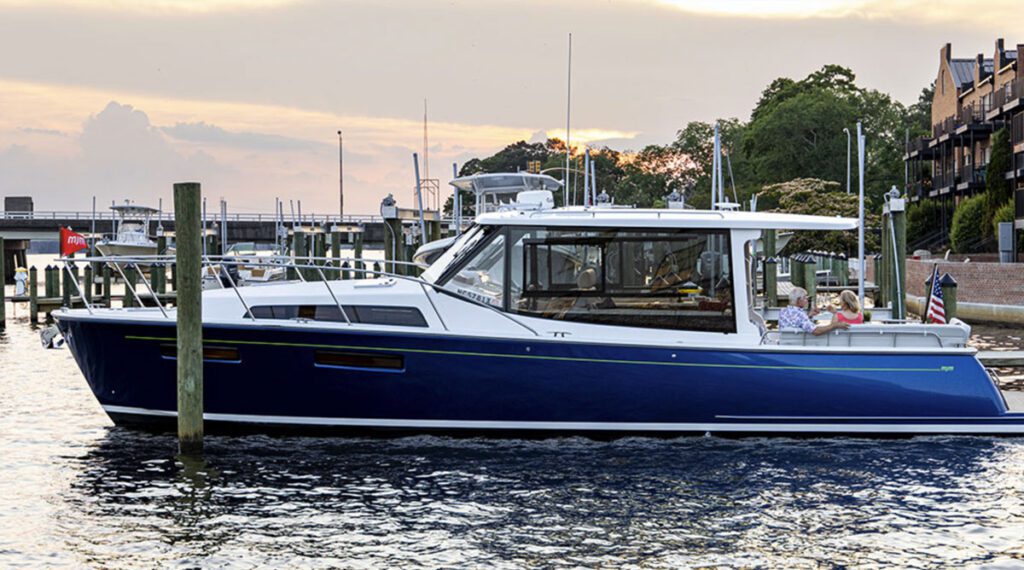 New Boat: MJM 42 - By Jeanne Craig, Soundings With this debut, the builder wants to offer the finest cruising boat for couples. Because August had delivered a slew of… Read More
New Boat: MJM 42 - By Jeanne Craig, Soundings With this debut, the builder wants to offer the finest cruising boat for couples. Because August had delivered a slew of… Read More CO Tests the New MJM 42 Express Cruiser - By George Day Part One: Running fast and efficiently on the Pamilco River In early June, I travelled from Newport, Rhode Island, to Washington, North… Read More
CO Tests the New MJM 42 Express Cruiser - By George Day Part One: Running fast and efficiently on the Pamilco River In early June, I travelled from Newport, Rhode Island, to Washington, North… Read More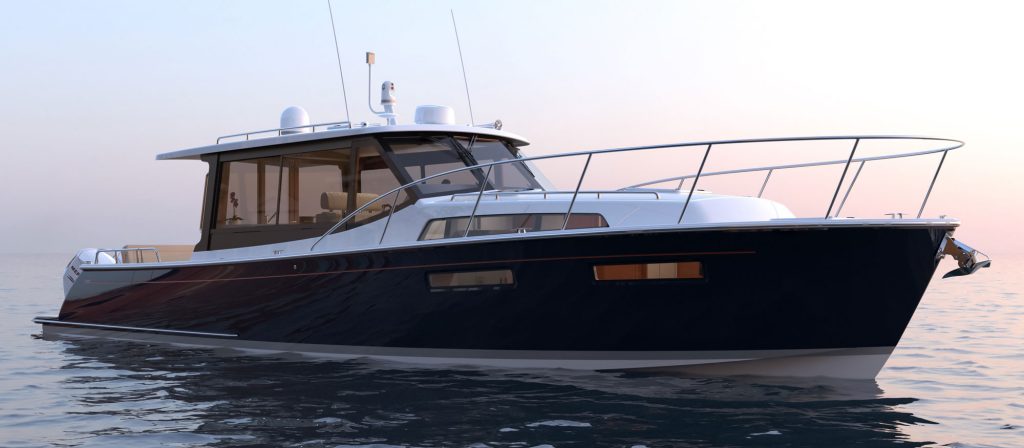 Evolution Of A Dream - Designed and built to supply comfort, performance, and safety, the new MJM 42 is all that...and much more. The new MJM 42 is a luxury,… Read More
Evolution Of A Dream - Designed and built to supply comfort, performance, and safety, the new MJM 42 is all that...and much more. The new MJM 42 is a luxury,… Read More
